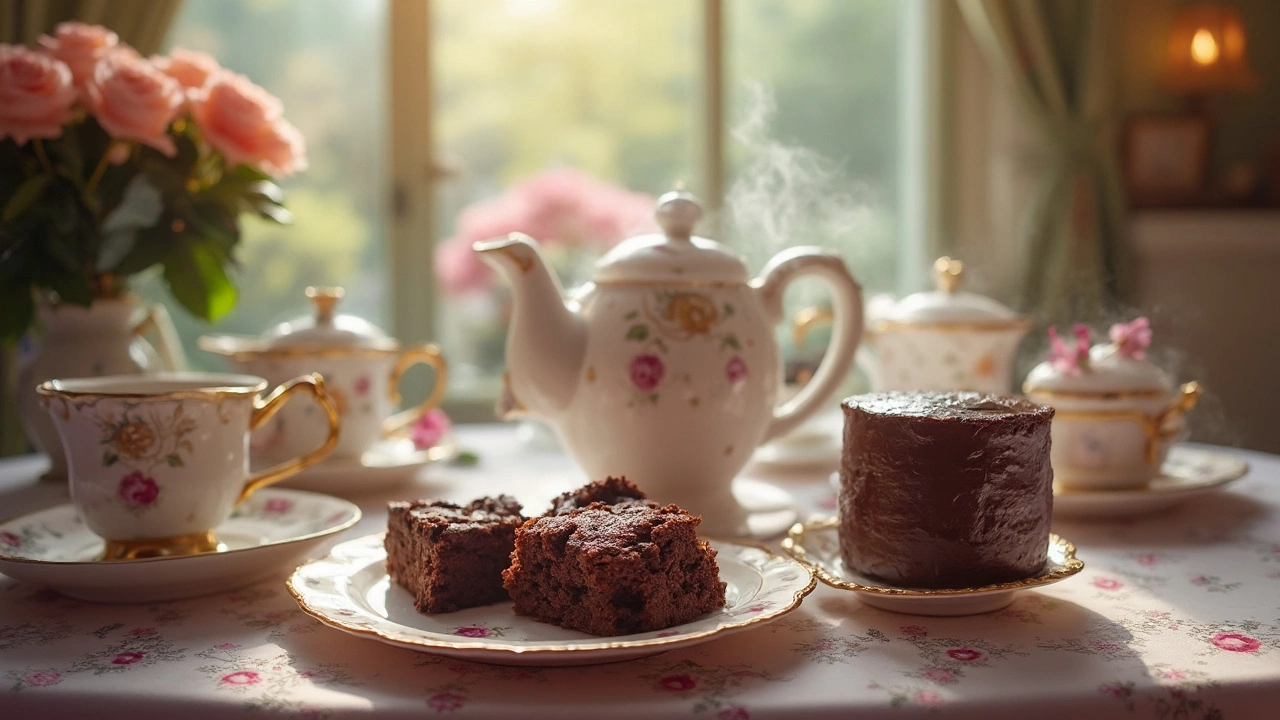
If you've ever been to a party and wondered whether you should grab a slice of cake or dive into a brownie, you're not alone. They're both delightful, but they offer distinct experiences. It's not just about taste; the texture and preparation make a world of difference.
At the heart of it, brownies have a denser, fudgier texture compared to the light and airy character of cakes. This comes down to the ingredients and how they're combined. For instance, brownies typically use less flour and often have more cocoa or melted chocolate, giving them that rich, decadent flavor.
Cakes tend to be more about balance. They incorporate leavening agents like baking powder to give them that lift and soft crumb. Brownies, on the other hand, usually rely on eggs for leavening, leading to a thicker and sometimes gooey delight.
- Texture: What's in a Feel?
- Ingredients: The Building Blocks
- Flavor Impact: Sweet Delights
- Baking Method: From Batter to Oven
- Tips for Perfect Brownies
- Making the Right Choice
Texture: What's in a Feel?
When it comes to distinguishing a cake from a brownie, texture is key. While both are delicious, their differences get pretty noticeable with the first bite.
The Cake Texture
Think about birthday parties or weddings—those classic moments when a fluffy, airy cake is shared. Cakes are designed to be light, thanks to the addition of leavening agents like baking powder or baking soda. These ingredients, combined with creamed butter and sugar, give cakes their characteristic rise and soft crumb.
If you love that melt-in-your-mouth experience with a slight bounce back when you press them, you're describing a cake. They usually have more butter, which when combined perfectly with sugar, creates a web of tiny air bubbles that expand in the oven, resulting in that delightful texture.
The Brownie Texture
Now, let's talk about brownies. When you dive into a brownie, you're greeted with a rich, dense bite that's incredibly satisfying. Unlike cakes, brownies skip the heavy leavening, often relying more on eggs for volume and structure.
The higher chocolate content—whether in the form of cocoa powder or melted chocolate—contributes to its richer, more intense flavor profile. This makes brownies fudgier and chewier. You'd typically use less flour in brownies than in cake, which further supports that dense texture.
Comparing Both
| Aspect | Cake | Brownie |
|---|---|---|
| Texture | Light and airy | Dense and fudgy |
| Key Ingredients for Texture | Baking powder/soda, creamed butter, sugar | More chocolate, eggs, less flour |
Choosing between a cake and a brownie often depends on what you're in the mood for. If you're into fluffy and light, cakes are your go-to. But if you want something rich and thick, a brownie will hit the spot.
Ingredients: The Building Blocks
When it comes to baking, understanding ingredients is like knowing the notes to a melody. For cake lovers, the main players are flour, sugar, butter, eggs, and leavening agents. Flour gives the cake its structure, while sugar sweetens the deal. Butter and eggs add moisture and richness, but it's the leavening agents like baking powder that give cakes their fluffy rise.
Now switch gears and think about a brownie. These gooey treats lean heavily on chocolate, and that's not just for flavor. The cocoa butter in chocolate acts as a fat, which means brownies can sometimes have less butter than cakes. Plus, brownies often skip the baking powder, resulting in that irresistible dense texture. And let's not forget about sugar—it’s crucial for that perfect crackly top.
The Role of Chocolate
In brownies, chocolate takes center stage. Most recipes call for both melted chocolate and cocoa powder, a double threat that delivers rich, intense flavor. Cakes might have chocolate, but it usually plays second fiddle to the act of rising and fluffing up.
The Egg Factor
Things get interesting with eggs. Both desserts use them to bind and add moisture, but the ratio often differs. Cakes might use more eggs to ensure they hold their structure, while brownies prioritize a fudgier consistency, sometimes upping egg yolks for that creamy texture.
- Take Note: Brownie recipes often call for a higher proportion of sugar and chocolate than cakes, but less flour.
- Butter is generally used in both, but cakes may use oil for a lighter crumb.
- Many cake recipes include milk or buttermilk to lighten the batter, whereas brownies rely on the chocolate's richness.
Whether you're team cake or team brownie, understanding these key ingredients lets you create something delicious every time. Try tweaking a recipe next time and see if you can spot the difference!
Flavor Impact: Sweet Delights
When it comes to flavor, cake and brownie bring their own unique charms to the table. It's not just about sugar sweetness, but how other ingredients like chocolate and vanilla play into their profiles.
Brownies are known for their intense, rich chocolate flavor. That's because they rely heavily on the chocolate itself rather than just cocoa powder. This gives them that dense, almost fudge-like quality that chocolate lovers can't resist.
Flavor Variations in Brownies
Even though traditional brownies are all about chocolate, adventurous bakers love experimenting. You might find brownies with added nuts like walnuts or pecans for a crunch, or swirled with cream cheese for a tang. Espresso is another popular addition, known to enhance the depth of chocolate flavor.
The Cake Side of Things
Cakes, on the other hand, boast a wide range of flavors. They aren’t limited to chocolate. Think of a classic vanilla sponge, a zesty lemon drizzle, or a luxurious red velvet. Cakes often rely on flavor extracts to shine, along with ingredients like fruit zests and nuts.
In short, if you're going for an in-your-face chocolate experience, a brownie might be your best bet. But if you’re in the mood for myriad flavors, a slice of cake will do just fine.
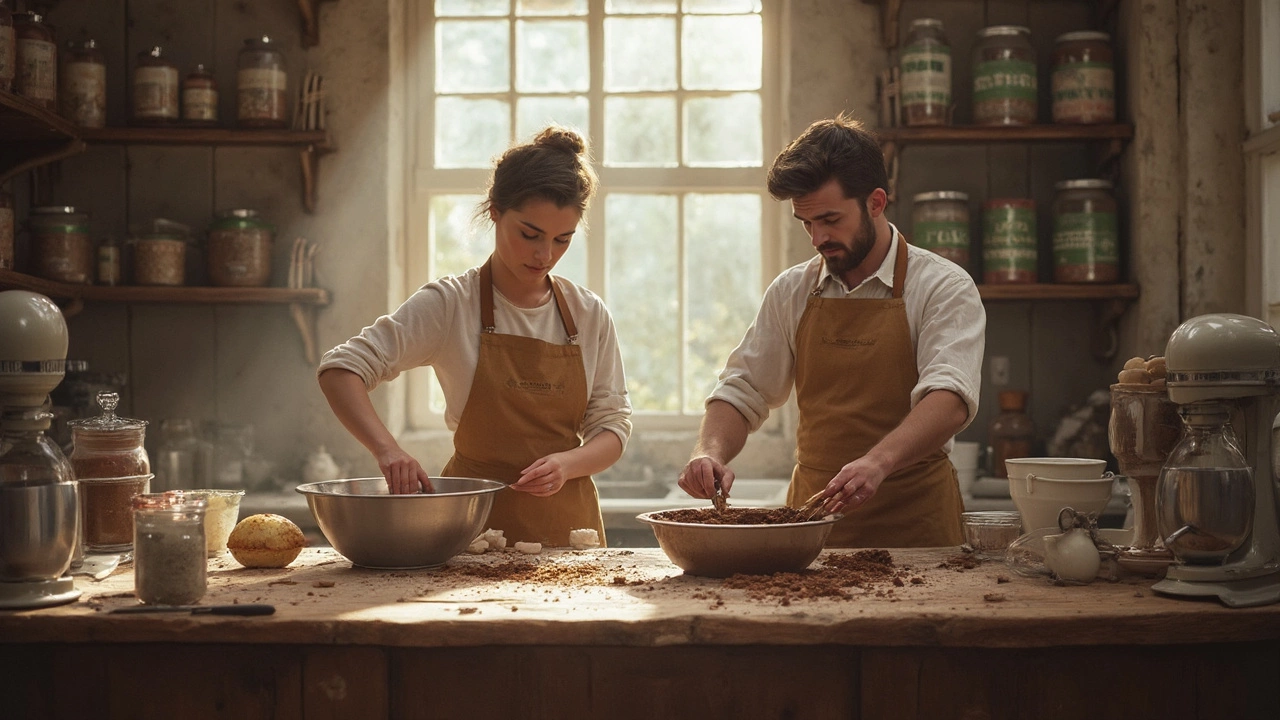
Baking Method: From Batter to Oven
When it comes to baking, the method can really change the end product, especially when comparing cake and brownie making techniques. While both start with batter, the steps to get from raw ingredients to finished dessert vary quite a bit.
Mixing: Getting It Right
For cakes, you'll often employ the creaming method. This involves beating sugar and butter together until light and fluffy before gradually adding wet ingredients like eggs and milk. This process helps incorporate air into the batter, crucial for a fluffy cake.
Brownies are another story. You typically melt the butter first, sometimes with chocolate, creating a wetter mixture. The dry ingredients are gently folded in, careful not to overmix, which ensures they remain dense and fudgy rather than cake-like.
Baking Temperature and Time
Cakes usually require a moderate oven, about 350°F (175°C), allowing the batter to rise gently and bake evenly. In contrast, brownies often bake at a slightly lower temperature, around 325°F (165°C), to ensure they don't overcook on the edges while staying moist in the center.
Doneness: When to Take Them Out
For cakes, a skewer or toothpick inserted into the center should come out clean, indicating it's done. But, with brownies, a few moist crumbs on the toothpick are ideal to avoid over-baking. This keeps them deliciously gooey.
Cooling: The Final Step
Cakes need time to cool on a rack to prevent them from sinking. Brownies, meanwhile, should cool in the pan. This allows them to become more stable, making it easier to cut them into perfect squares.
By understanding these unique baking methods, you can confidently create the dessert of your choice, ensuring it turns out just right—whether you're going for the lightness of a cake or the irresistible chewiness of a brownie.
Tips for Perfect Brownies
Getting that perfect brownie can be a game of balance. It's all about getting the right texture and flavor without much hassle.
Stick to Quality Ingredients
Using high-quality ingredients can really make a difference. Opt for good cocoa powder or genuine dark chocolate to give your brownies that rich, indulgent flavor. Trust me, you'll taste the difference.
Don't Overmix
When combining ingredients, be gentle. Overmixing can lead to tough, chewy brownies, and nobody wants that. Mix just until all the ingredients are combined.
Mind the Bake Time
Check on your brownies before you think they're ready. Insert a toothpick into the center—if it comes out with a few moist crumbs, they're done. Remember, they'll continue to cook a bit after you take them out of the oven.
Experiment with Add-Ins
Want to jazz things up? Try adding crushed nuts, chocolate chips, or even a swirl of peanut butter to your mix. It adds texture and a little surprise with every mouthful.
Cooling Matters
Let your brownies cool completely before cutting. It allows them to set properly and makes slicing neater.
- Cake-like: If you prefer more cake-like brownies, add a bit more flour to your recipe and include a leavening agent such as baking powder.
- Fudgy Result: For fudgier brownies, use less flour and more chocolate or butter.
And there you go! With these simple tips, you'll be making perfect brownies that everyone will rave about in no time.
Making the Right Choice
So you're standing in front of your pantry, wondering if it should be a cake or a brownie day. Your decision might seem tiny, but it can seriously impact your dessert satisfaction! Let's break it down.
Occasion Matters
First off, think about the occasion. Are you celebrating a birthday or a big milestone? A cake often feels more festive and is perfect for gatherings with its ability to serve more people. On the flip side, brownies are laid-back and ideal for smaller groups or when you're looking for a quick treat without much fuss.
Crowd Preferences
Know your audience. Some folks swear by the simplicity and richness of brownies. They're a hit for chocoholics who want an intense chocolate fix without the extras. Cakes, however, offer more variety in flavor. Whether it's vanilla bean or lemon, you'll definitely find a cake that matches the crowd’s taste buds.
Time and Ingredients
If you're pressed for time, brownies might be your best bet. They're generally quicker and easier to whip up, needing fewer steps than a layered cake. Plus, you often have the ingredients—like cocoa, flour, and eggs—on hand. Cakes might require a few extra things like frosting or specific extracts, which could mean an extra trip to the store.
Personal Cravings
At the end of the day, trust your gut—literally. If you're craving that gooey, fudgy bite, reach for the brownie pan. For those days when you need something light and fluffy, cake is king.




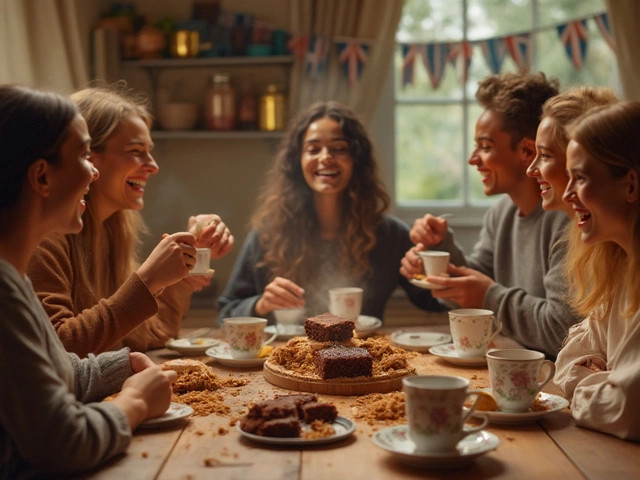
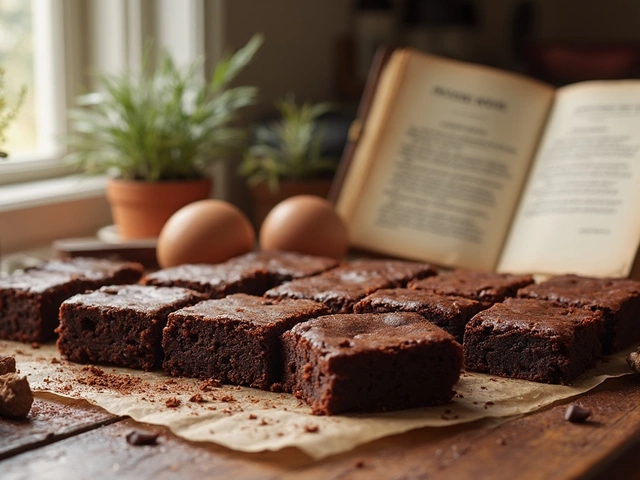

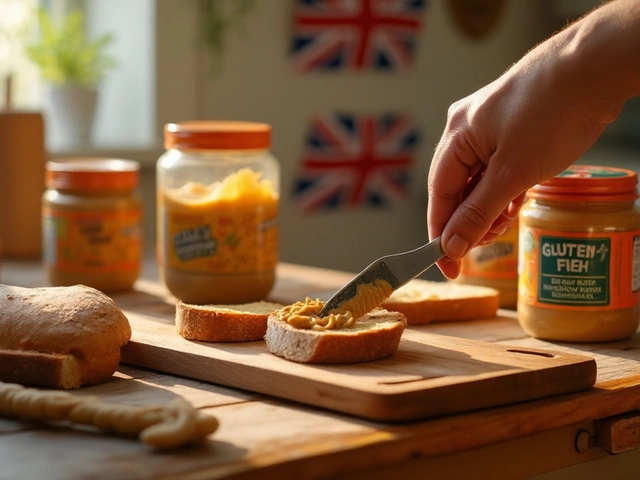
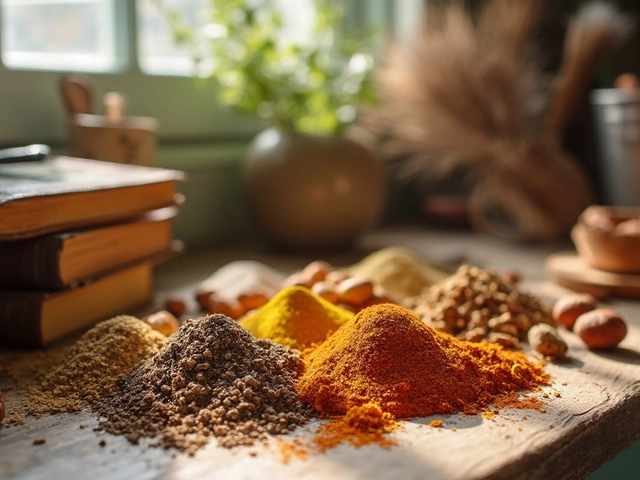

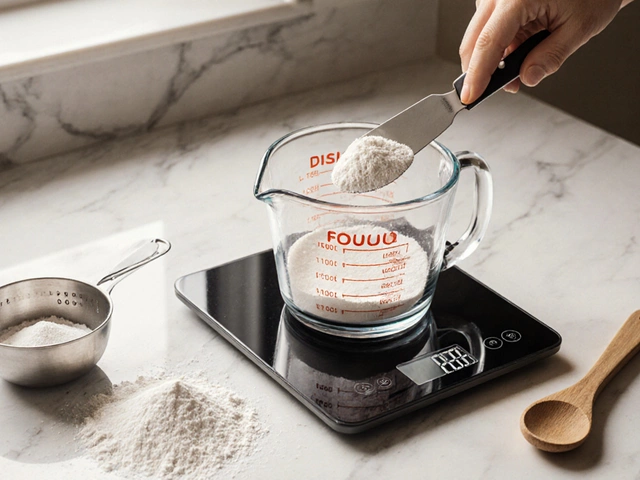
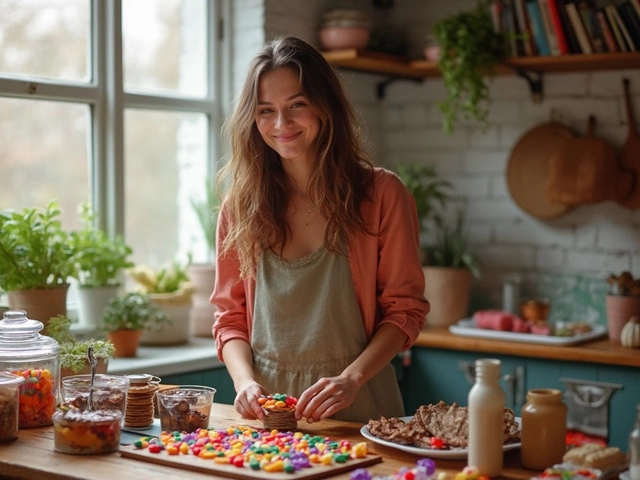
Write a comment